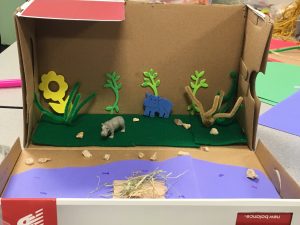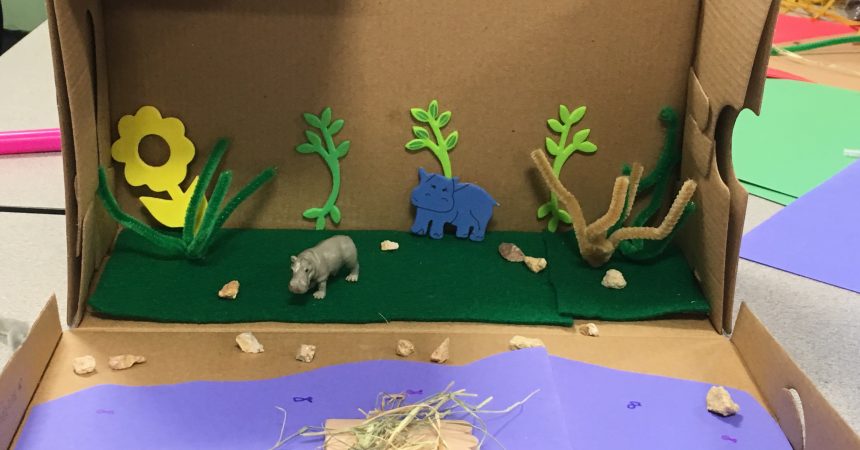Zoo InternQuest is a seven-week career exploration program for San Diego County high school juniors and seniors. Students have the unique opportunity to meet professionals working for the San Diego Zoo, Safari Park, and Institute for Conservation Research, learn about their jobs, and then blog about their experience online. Follow their adventure here on the Zoo’s website!
 Have you ever made a spinning box for a fox? This may seem like it was pulled out of a Dr. Suess book, but it is the type of job that a Zoo employee does everyday! Ms. Jessica Sheftel, who has worked at the Zoo for 12 years, is the Zoo’s Animal Welfare Specialist. Welfare involves five main components: enrichment, nutrition, training, husbandry, and vet services.
Have you ever made a spinning box for a fox? This may seem like it was pulled out of a Dr. Suess book, but it is the type of job that a Zoo employee does everyday! Ms. Jessica Sheftel, who has worked at the Zoo for 12 years, is the Zoo’s Animal Welfare Specialist. Welfare involves five main components: enrichment, nutrition, training, husbandry, and vet services.
Before attaining this job title, however, Ms. Sheftel attended college and gained years of work experience. She earned her bachelor’s degree in anthropology with a minor in behavioral studies. She worked at the Atlanta Zoo for four years, giving her work experience with animals. Later, she worked with bonobos in a research lab at Georgia State University, teaching primates how to communicate with humans. With education and experience under her belt, she was able to obtain a position at the San Diego Zoo!
The goal of Ms. Sheftel’s position is to give animals opportunities to thrive. This includes giving them a well-balanced diet, the ability to self-maintain or groom, optimal health, the ability to express species specific behavior, and choice and control. The latter two areas are where she does most of her work.
To enhance these two areas, she creates enrichment opportunities for the animals, which involve complex, multi-layered experiences that promote certain behaviors. For the smaller animals, she can use toys and puzzles that were originally designed for dogs and cats. However, for the larger animals (like elephants), she has to design the enrichment from scratch. Sometimes the enrichment can be complicated, like a ball and rope mechanism that an elephant has to move in a pattern to get the food inside. Sometimes it can be simple, like removing the polar bears from their exhibit and letting in the nearby reindeer to spread their scent. The designs can even help save the environment, like bird toys made from recycled materials.
In addition to designing these complex and necessary experiences for the animals, Ms. Sheftel has tools to monitor their behavior. Most of the monitoring equipment comes from the hunting world, and surveillance cameras can really help the Zoo learn more about the way an animal acts. For example, these cameras allowed her to track a zebra’s sleeping patterns. She also helps consult on the designs of the exhibits.
Something that Ms. Sheftel loves about her job is that her daily routine is different everyday, giving her a plethora of opportunities to think critically and creatively. For the most part, her day centers around presentations, consultations, and workshops. The only part of her job that she does not like is that she occasionally feels a lack of completion. Since her work is mostly administrative and conceptual, it can be difficult when she does not end up seeing the finished product.
However, her job is salaried, meaning her hours are more flexible than jobs that are paid hourly. She also has holidays off and paid vacation time. Ms. Sheftel has an incredible, rewarding job that creates a more enjoyable and natural environment for the Zoo’s animals. If you want to find solutions to problems and engage the minds of animals, then this may be the job for you!
Dana, Careers Team
Week Six, Fall Session 2017


